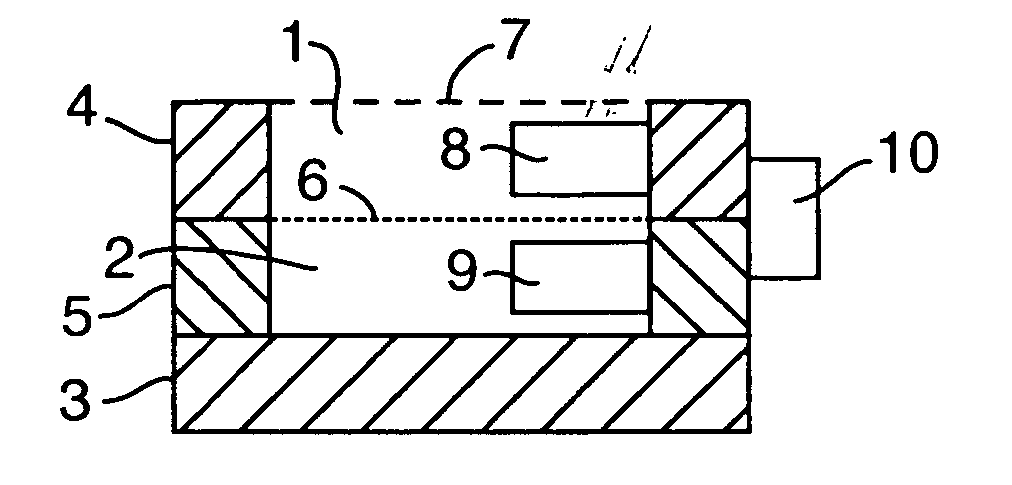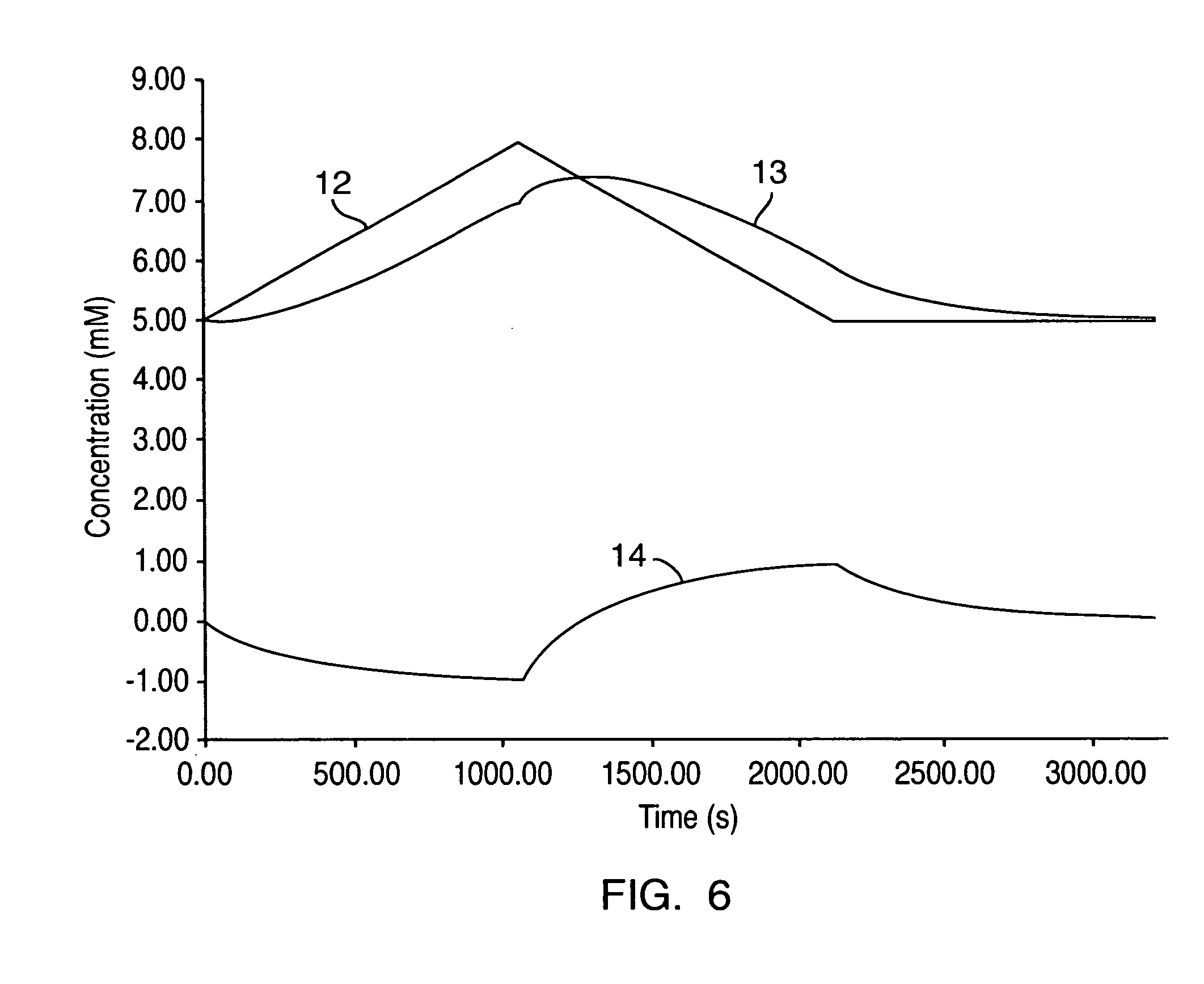Method and device for monitoring analyte concentration by use of differential osmotic pressure measurement
a technology of differential osmotic pressure and analyte concentration, which is applied in the field of biological sensors, can solve the problems of significant detection errors, inconvenient patient care, and need to take blood samples, and achieve the effect of reducing the problem
- Summary
- Abstract
- Description
- Claims
- Application Information
AI Technical Summary
Benefits of technology
Problems solved by technology
Method used
Image
Examples
Embodiment Construction
[0024]FIG. 1 shows a sectional view of a device, where two compartments 1 and 2 are stacked on a base plate 3. A perspective view of the same device is shown in FIG. 3. The device is implantable into the human body, and is suitable for detecting the glucose level in blood or interstitial fluid.
[0025] Compartment 1 is sealed to the exterior by the ring member 4 and by a barrier 7, and compartment 2 is sealed to the exterior by ring member 5 and base plate 3. A barrier 6 seals the two compartments 1 and 2 from each other.
[0026] Membranes with a specific Molecular Weight Cut Off (MWCO) form each of the barriers 6 and 7. The membrane forming the barrier 6 has an MWCO just below the size of the glucose molecule, and the membrane forming the barrier 7 has an MWCO just above the size of the glucose molecule. This means, that only species with the size of the glucose molecule or below will penetrate from the exterior into compartment 1, and that only species with a size below the glucose ...
PUM
 Login to View More
Login to View More Abstract
Description
Claims
Application Information
 Login to View More
Login to View More - R&D
- Intellectual Property
- Life Sciences
- Materials
- Tech Scout
- Unparalleled Data Quality
- Higher Quality Content
- 60% Fewer Hallucinations
Browse by: Latest US Patents, China's latest patents, Technical Efficacy Thesaurus, Application Domain, Technology Topic, Popular Technical Reports.
© 2025 PatSnap. All rights reserved.Legal|Privacy policy|Modern Slavery Act Transparency Statement|Sitemap|About US| Contact US: help@patsnap.com



